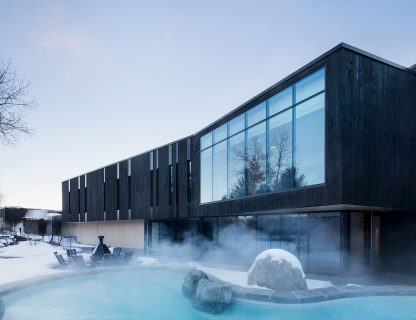A few weeks ago, while listening to an episode of Rich Roll’s famous podcast, I was struck by a sweet and enlightening idea. Although I’m usually not completely attentive when I listen to podcasts, this idea has been floating around in my head for several days, and continues to make its way through my thoughts: what if love was a decision, instead of a feeling?
When we are young, we are often taught to recognize the signs of love through our body, our reactions, our affects.
We have all been asked by an adult if we had butterflies in our stomachs in the presence of a classmate. Or if we blushed when this same person paid special attention to us. As if these signs were infallible clues of love.
Although these sensations do exist – and although they are difficult to explain from a pragmatic point of view – they may not necessarily constitute the first signs of love. They refer to a much more complex world that contains a portion of our history, our relationships, our dreams and our ideals.
At most, these physical phenomena should probably be understood as simple signs or indicators showing us that something important is happening. As if our body was asking us to pay attention to the interaction, without revealing the exact nature of the phenomenon experienced.
As we get older and experience our first serious relationships, we inevitably end up facing difficulties. This sometimes leads us to agree with the famous saying that ‘love is not enough’.
What if it was our view of love and the way we are taught about it that automatically causes us to be disillusioned? As if we expected it to work, without putting in any effort. Without having to choose openness, patience, discomfort, vulnerability. As if we didn’t expect to have to choose to grow up.
By basing our understanding of love on physical sensations from an early age, we become powerless towards what we are facing. We feel that we don’t get a choice, as if we were victims towards these unexplained feelings.
The reality, however, is quite different, and much more complex. The challenges of maintaining an interpersonal relationship tell us about choice, intention, communication.
Everything is there to present the idea that love – the real one, the one that overwhelms us, that changes us, that transforms us – would be a decision, and not only an emotion.
And if love was a decision, how would we make it?
Choosing to love would perhaps mean to focus all our attention on the other. Maybe it would mean to reach out more often. To hold each other in our arms despite the conflicts. To listen to each other instead of just hearing what they have to say. To wish each other good, despite our differences.
It would perhaps mean to regain control over our interpersonal relationships, to get back to the heart of interactions. To question ourselves more often.
And to choose yourself foremost.




